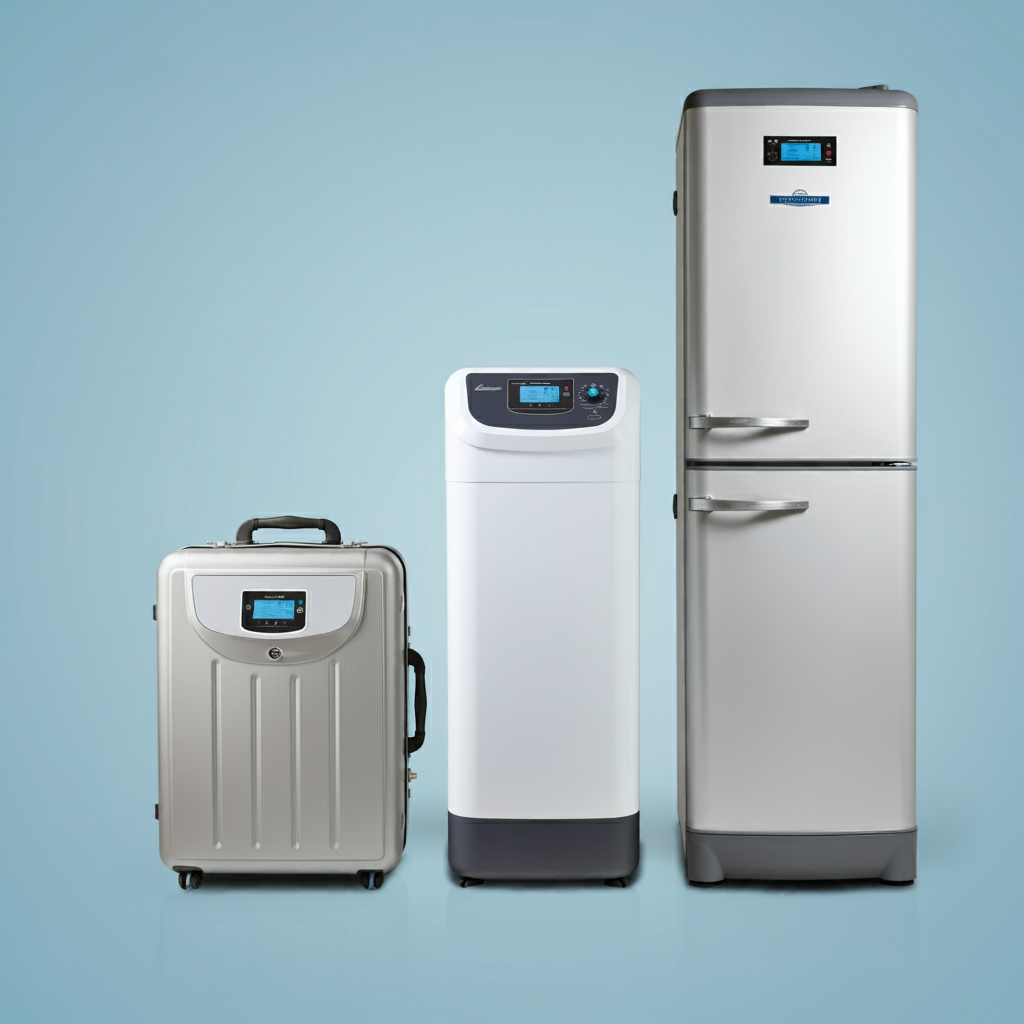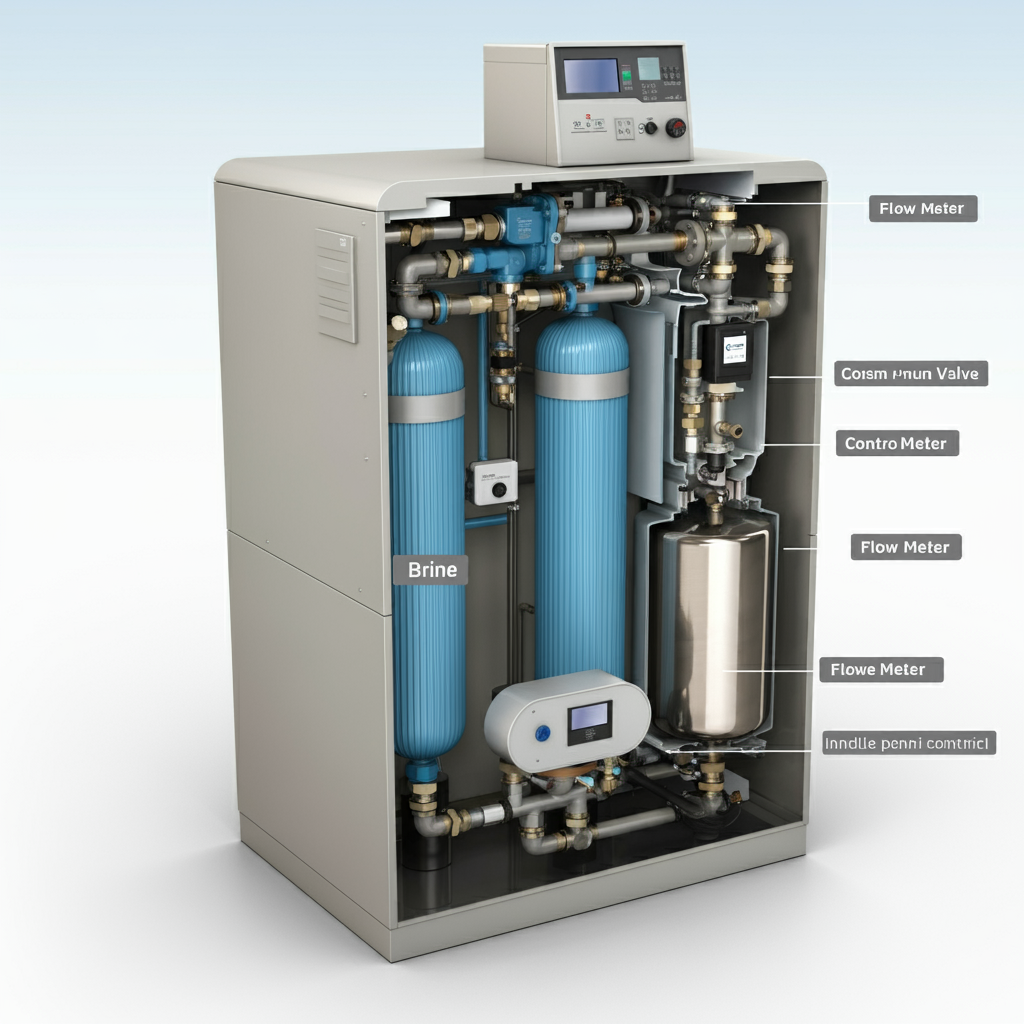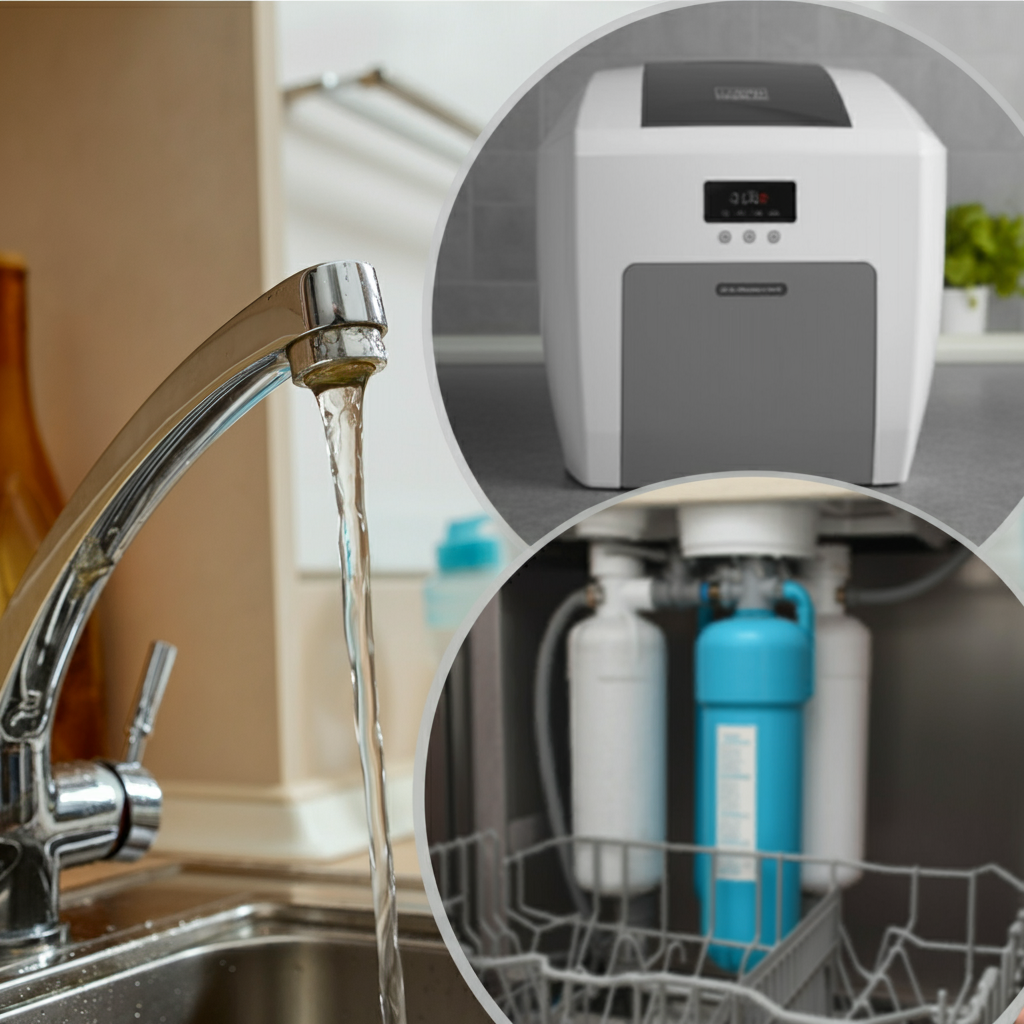Peak water usage significantly impacts the sizing of your water softener. A water softener, a device that removes minerals causing water hardness, needs to be appropriately sized to handle the maximum amount of water your household uses during peak periods. If your softener is too small, it won’t be able to keep up with demand, leading to hard water issues even with the system installed. At WaterSoftenerSizing.com, we understand that choosing the right water softener is essential for maintaining the quality of your water and the longevity of your plumbing and appliances. That’s why we’re here to guide you through the intricacies of water softener sizing, with a particular focus on how peak water usage comes into play. Peak water usage refers to the times of day when your household’s water demand is at its highest. Think of those busy mornings when everyone is showering, the dishwasher is running, and the washing machine is on its second cycle. During these periods, your water softener needs to work harder to remove minerals like calcium and magnesium that cause hard water problems. Similar to how a highway needs to be wide enough to accommodate rush hour traffic, your water softener needs sufficient capacity to handle peak water usage. If it’s undersized, it will struggle to keep up, resulting in hard water flowing through your pipes and appliances. This can lead to a host of issues, including soap scum buildup, dry skin and hair, reduced appliance efficiency, and even plumbing damage over time. In contrast, an oversized water softener can lead to unnecessary salt and water waste during regeneration cycles, increasing your operating costs. Finding the right balance is crucial, and understanding your peak water usage is a key factor in determining the appropriate size for your water softener.
What Exactly is Peak Water Usage?
Peak water usage refers to the specific times of the day when your household’s demand for water is at its highest. It’s when multiple water-using appliances and fixtures are operating simultaneously, putting a significant strain on your plumbing system and water softener. Think of a typical weekday morning: multiple family members are showering, the dishwasher is cleaning breakfast dishes, and the washing machine is churning away with a load of laundry. In the evening, a similar scenario unfolds as everyone returns home, showers, cooks dinner, and washes dishes. These are prime examples of peak water usage periods. According to the Water Research Foundation, the average household experiences two peak water usage periods per day, one in the morning (between 6 a.m. and 9 a.m.) and another in the evening (between 5 p.m. and 9 p.m.). However, the exact timing and intensity of peak usage can vary depending on household size, lifestyle, and even seasonal factors. For instance, families with children may experience higher peak usage during school days compared to weekends. Why is peak water usage important to consider when sizing a water softener? Because during these periods of high demand, an undersized softener can become overwhelmed, leading to hard water breakthrough. This means untreated hard water can bypass the softener and enter your plumbing system, negating the benefits of softened water.
How Does Peak Water Usage Affect Water Softeners?
To understand how peak water usage impacts your water softener, let’s first briefly recap how these appliances function.
Water Softener Basics: The Ion Exchange Process
Water softeners operate on the principle of ion exchange. Hard water, which contains high levels of calcium (Ca2+) and magnesium (Mg2+) ions, passes through a resin bed inside the softener tank. This resin is coated with sodium (Na+) ions. During the softening process, the calcium and magnesium ions in the hard water are attracted to the resin beads and swap places with the sodium ions. As a result, the water leaving the softener is now “soft,” meaning it has a lower concentration of hardness minerals and a higher concentration of sodium.
The Strain of Peak Demand on Water Softeners
While water softeners are designed to handle a certain amount of hard water, peak water usage can push them beyond their limits. An undersized softener, in particular, can struggle to keep up with the increased demand for soft water during peak periods. This can lead to a phenomenon known as hard water breakthrough. Essentially, the resin bed becomes saturated with calcium and magnesium ions, and it can no longer effectively exchange them for sodium ions. As a result, untreated hard water starts to pass through the softener and into your plumbing system. In addition to hard water breakthrough, peak usage can also cause an undersized softener to regenerate more frequently. Regeneration is the process by which the resin bed is cleaned and recharged with sodium ions. It typically involves flushing the resin with a brine solution, which can consume significant amounts of water and salt. Frequent regeneration cycles not only increase your water and salt usage but also put additional wear and tear on the softener, potentially shortening its lifespan.
Importance of Proper Sizing
As the Water Quality Association (WQA) emphasizes, “Proper sizing is critical for a water softener to work effectively.” An undersized softener will not only fail to deliver soft water during peak usage but can also incur higher operating costs and require more frequent maintenance. On the other hand, an oversized softener can lead to inefficient operation and unnecessary waste of water and salt. 
Key Factors Influencing Water Softener Sizing
Selecting the correct water softener size isn’t a one-size-fits-all endeavor. Several key factors come into play, each influencing the optimal capacity for your specific needs:
1. Water Hardness: The Driving Force Behind Softener Demand
Water hardness, the concentration of calcium and magnesium in your water supply, is the primary factor dictating the workload for your water softener. Measured in grains per gallon (gpg) or parts per million (ppm), higher hardness levels necessitate a larger softener capacity to effectively remove minerals. In areas with exceptionally hard water exceeding 10 gpg, like parts of the Midwest, a higher-capacity softener becomes essential. For instance, a family of four in Arizona, where water hardness averages 15 gpg, would require a significantly larger softener than a similar family in New England, with an average hardness of 3 gpg.
2. Household Size: Scaling Up Capacity with More Users
The number of people in your household directly impacts daily water consumption and, consequently, the demand placed on your water softener. A larger household with more individuals showering, washing clothes, and running the dishwasher will naturally require a softener with greater capacity compared to a smaller household with fewer members. For example, a single-person household using 75 gallons of water daily would have significantly different softener needs than a family of five consuming 300 gallons per day.
3. Daily Water Usage: Beyond the Basics
Daily water usage encompasses all the water your household consumes for various activities throughout the day. This includes showering, bathing, washing clothes and dishes, cooking, and more. Accurately estimating your daily water usage is crucial for determining the appropriate softener size. Several online water usage calculators, such as the one offered by the Water Quality Association (WQA), can help you estimate your household’s daily consumption based on the number of people, appliances, and water-using fixtures.
4. Peak Water Demand: The Ultimate Test
While average daily water usage is important, it’s equally crucial to consider peak water demand. This represents the maximum amount of water your household uses simultaneously during peak usage times. For instance, if multiple showers are running, the dishwasher is on, and the washing machine is filling up simultaneously, your softener will face its highest workload. To accurately size your water softener, you must factor in both average daily usage and peak demand. A softener sized solely for average usage might be overwhelmed during peak periods, leading to hard water issues.
Additional Factors to Consider
While the factors mentioned above are the primary drivers of softener sizing, other nuances can also influence your decision:
- Appliances and Fixtures: High-flow showerheads, jetted tubs, and other water-intensive fixtures can increase peak demand, necessitating a larger softener.
- Seasonal Variations: In areas with distinct seasons, water usage may fluctuate. For example, outdoor watering during summer can increase demand.
- Presence of Iron or Manganese: If your water contains significant levels of iron or manganese, these minerals will also contribute to the softener’s workload, potentially requiring a larger capacity or a specialized softener designed for iron removal.
By meticulously evaluating these factors, you can collaborate with a water treatment professional to determine the optimal water softener size that caters to your household’s unique requirements. This proactive approach ensures that your softener operates efficiently, consistently delivers soft water, and enjoys a long, productive lifespan.
Calculating the Right Water Softener Size
Calculating the correct water softener size for your home requires a bit of math, but don’t worry, we’ll guide you through it step-by-step. Remember, accurate sizing is crucial to ensure your softener functions efficiently and effectively addresses your water hardness concerns.
The Step-by-Step Guide to Water Softener Sizing
- Determine Water Hardness: The first step is to know your water’s hardness level, measured in grains per gallon (gpg). You can obtain this information through a home water test kit or by contacting your local water utility provider. Many municipalities also publish annual water quality reports that include hardness data. If your water comes from a private well, you’ll need to have it professionally tested.
- Estimate Daily Water Usage: The next step involves calculating your household’s average daily water consumption. A good starting point is to multiply the number of people in your household by 75 gallons per person. However, this is just an estimate, and your actual usage may vary. For a more accurate assessment, you can review your water bills or use an online water usage calculator like the one offered by the Water Quality Association (WQA).
- Calculate Peak Water Demand: Peak water demand refers to the maximum amount of water your household uses simultaneously during peak usage times. To estimate this, consider the number of bathrooms in your home and the potential for concurrent water use during peak hours. For example, if you have two bathrooms and anticipate two showers, a dishwasher cycle, and a washing machine load running simultaneously, you’ll need to factor in the flow rates of these appliances and fixtures to determine your peak demand.
- Daily Softening Requirement: Once you have your daily water usage and water hardness figures, multiply them together to calculate your daily softening requirement in grains. For example, if your household uses 300 gallons of water per day and your water hardness is 10 gpg, your daily softening requirement would be 3000 grains (300 gallons x 10 gpg).
- Choosing the Right Softener Size: Finally, select a water softener with a grain capacity that exceeds your daily softening requirement and can comfortably handle your peak water demand. To account for future needs or fluctuations in usage, it’s often recommended to choose a softener with a slightly larger capacity than your calculated requirement.
Online Calculators and Professional Consultation
To simplify the sizing process, consider using a reputable online water softener sizing calculator. Several manufacturers, such as Kinetico and Culligan, offer these tools on their websites. However, keep in mind that online calculators provide estimates, and it’s always best to consult with a water treatment professional for a precise assessment of your specific needs. A professional can conduct a thorough water analysis, assess your household’s unique water usage patterns, and recommend a softener model and size that perfectly aligns with your requirements.
Signs Your Water Softener is Undersized
Even with the most meticulous calculations and professional guidance, it’s possible to end up with a water softener that’s not quite right for your household’s needs. Recognizing the signs of an undersized water softener is crucial for addressing the issue promptly and preventing long-term problems.
1. The Return of Hard Water Symptoms
The most obvious indicator of an undersized softener is the reappearance of hard water symptoms. If you start noticing the following, it could be a sign that your softener isn’t keeping up with demand:
- Soap Scum: A filmy residue on bathroom surfaces, dishes, and laundry that doesn’t easily rinse away.
- Scale Buildup: White, chalky deposits on faucets, showerheads, and inside appliances like coffee makers and water heaters. This buildup can restrict water flow and decrease appliance efficiency over time.
- Dry Skin and Hair: Hard water can leave your skin feeling dry and itchy and your hair feeling dull and brittle.
- Fading Clothes: The minerals in hard water can cause colors to fade and fabrics to feel rough and scratchy after washing.
2. Increased Salt Usage
If you find yourself refilling your water softener’s salt tank more frequently than usual, it could be a sign that the softener is regenerating more often than it should. As mentioned earlier, an undersized softener will become overwhelmed during peak usage, triggering more frequent regeneration cycles in an attempt to keep up with demand.
3. Reduced Water Pressure
Another telltale sign of an undersized water softener is a noticeable drop in water pressure, especially during peak usage times. This occurs because the softener’s resin bed becomes saturated with hardness minerals and restricts the flow of water through the system. If you experience weak water pressure when multiple faucets or appliances are in use, it could be a red flag that your softener is not adequately sized.
4. Frequent Regeneration Cycles
Most water softeners are programmed to regenerate on a regular schedule, typically every few days. However, an undersized softener may regenerate more frequently, even daily, in an attempt to maintain soft water during peak demand periods. If you notice that your softener is regenerating more often than usual, it’s worth investigating whether it’s the right size for your needs.
The Importance of Early Detection
Identifying these signs early on is crucial to prevent long-term problems associated with hard water, such as plumbing damage, appliance malfunctions, and increased energy consumption. If you suspect your water softener is undersized, it’s essential to consult with a water treatment professional to assess your options and ensure you have the right system for your household. 
Solutions for Peak Water Usage Issues
If you suspect your water softener is undersized, don’t despair! There are several solutions available to address peak water usage challenges and ensure a consistent supply of soft water for your home.
1. Upgrade to a Larger Softener
The most straightforward solution for an undersized softener is to upgrade to a model with a larger capacity. When choosing a new softener, consider your household’s current and future needs. If you anticipate your family growing or your water usage increasing, opting for a softener with ample capacity can save you from facing similar issues down the line. Leading manufacturers like Kinetico and Culligan offer a wide range of water softeners with varying capacities, ensuring you can find the perfect fit for your home. Their knowledgeable representatives can guide you through the selection process, taking into account your specific water hardness, household size, and peak water demand.
2. Add a Second Softener
For larger households with exceptionally high peak water demand, installing a second water softener can be a viable solution. This approach effectively doubles your softening capacity, ensuring an ample supply of soft water even during the busiest times of day. While this option requires a higher initial investment, it can provide long-term benefits by preventing hard water problems and reducing wear and tear on your primary softener. Consulting with a water treatment professional can help you determine if a dual softener system is the right choice for your needs.
3. Demand-Initiated Regeneration (DIR) Systems
Demand-Initiated Regeneration (DIR) is a smart technology employed by some modern water softeners. Unlike traditional softeners that regenerate on a fixed schedule, DIR systems monitor water usage and initiate regeneration only when needed. This optimizes efficiency, conserves water and salt, and ensures a consistent supply of soft water even during peak demand. Fleck, a renowned manufacturer of water softener control valves, offers a variety of DIR models known for their reliability and performance. By investing in a DIR softener, you can tackle peak water usage issues while minimizing operating costs and environmental impact.
4. Professional Consultation
While exploring the above solutions, it’s always recommended to seek professional advice from a water treatment expert. They can assess your specific water conditions, analyze your household’s water usage patterns, and recommend the most suitable solution for your individual needs. Remember, choosing the right water softener and addressing peak water usage challenges is an investment in your home’s comfort, efficiency, and long-term value. By taking proactive steps to ensure your softener is properly sized and equipped to handle peak demand, you can enjoy the benefits of soft, clean water throughout your entire home, day in and day out.
Mastering Your Water Softener: The Key to Soft Water, Even at Peak Times
Understanding how peak water usage affects your water softener’s sizing is essential for maintaining a consistent supply of soft, high-quality water throughout your home. An undersized softener can struggle to keep up with demand, leading to hard water issues and decreased efficiency. By carefully considering factors such as water hardness, household size, daily water usage, and peak demand, you can determine the optimal softener size for your specific needs. Remember, an appropriately sized softener not only protects your plumbing and appliances from the damaging effects of hard water but also ensures you enjoy the benefits of soft water, from softer skin and hair to brighter laundry and cleaner dishes, even during those busy mornings and evenings. If you’re unsure about your water softener’s capacity or suspect it might be undersized, don’t hesitate to consult with a water treatment professional. They can assess your unique situation and recommend the best solution to ensure you have soft water on demand, no matter how busy your household gets.
Key Takeaways
- Peak Water Usage Matters: Periods of high water demand can strain undersized softeners, leading to hard water issues.
- Know Your Hardness: Water hardness levels are crucial in determining the right softener size for your home.
- Calculate with Care: Accurate calculations of daily water usage and peak demand are essential for proper sizing.
- Signs of Trouble: Hard water symptoms, increased salt usage, low water pressure, and frequent regeneration cycles can indicate an undersized softener.
- Solutions Exist: Upgrading to a larger softener, adding a second unit, or opting for a demand-initiated regeneration system can address peak usage issues.
Your Path to Soft Water Starts Here
Ready to take the next step towards perfectly softened water? We invite you to utilize our free water softener sizing calculator at WaterSoftenerSizing.com. This tool, combined with our expert resources and guidance, will empower you to make an informed decision and select the ideal water softener for your home or business. Don’t let hard water hold you back – invest in the right solution today and experience the difference soft water can make in your life.

Craig “The Water Guy” Phillips is the founder of Quality Water Treatment (QWT) and creator of SoftPro Water Systems.
With over 30 years of experience, Craig has transformed the water treatment industry through his commitment to honest solutions, innovative technology, and customer education.
Known for rejecting high-pressure sales tactics in favor of a consultative approach, Craig leads a family-owned business that serves thousands of households nationwide.
Craig continues to drive innovation in water treatment while maintaining his mission of “transforming water for the betterment of humanity” through transparent pricing, comprehensive customer support, and genuine expertise.
When not developing new water treatment solutions, Craig creates educational content to help homeowners make informed decisions about their water quality.


